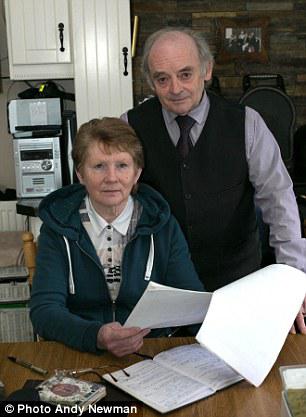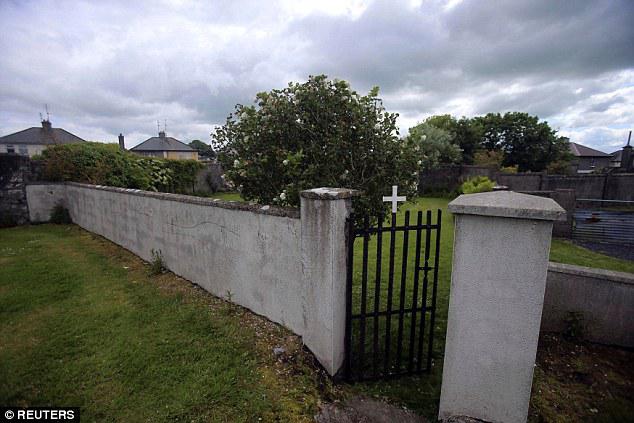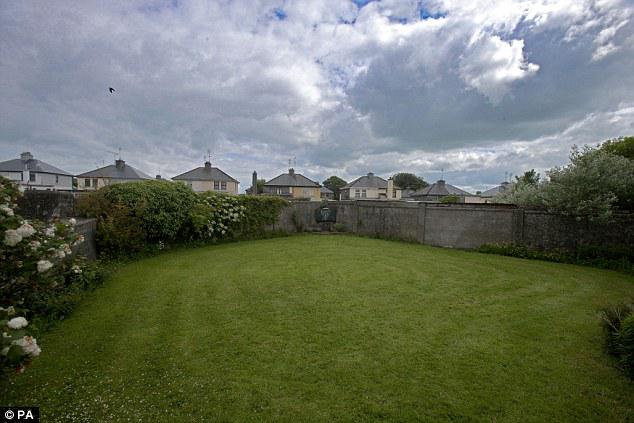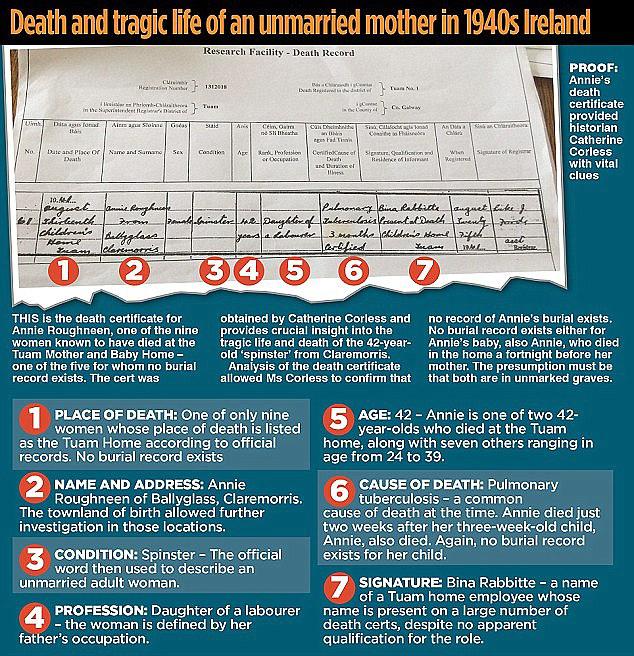The historian who spearheaded the campaign to discover the fate of 800 children who died at a former Catholic home for unmarried mothers and their children in Ireland was told 'just leave them there'.
Catherine Corless, 62, discovered there were 798 death certificates for children at the Bon Secours Mother and Baby Home in Tuam, County Galway, but only one burial certificate.
But when she started researching in 2014, she was told that it wasn't worth uncovering as it happened a long time ago.
She told the Irish Mirror: 'The county council knew at the time that there were remains there, the guards knew it, the religious [orders] knew it and it was just all nicely covered in and forgotten about.
'I was asked, "What are you doing? It's a long time ago. If there's bodies there just leave them".'
She said that all the land around the former home should be excavated.
Yesterday, a report revealed excavators had found a mass grave containing the remains of babies and young children in a disused sewer at the home.
The ages of the dead ranged from 35 foetal weeks to three years old and were mostly buried in the 1950s.
In a statement today, the Mother and Baby Homes Commission said 'significant quantities of human remains have been discovered in at least 17 of the 20 underground chambers which were examined earlier this year'.
The inquiry was launched after Ms Corless said there was evidence of an unmarked graveyard at the home, where records showed almost 800 children died between 1925 and 1961.
However, there was a burial record for just one child.
In the mid-1970s, local boys playing in the field had reported seeing a pile of bones in a hidden underground chamber.
Today's announcement dispels a popular argument that bones seen at the site might predate the orphanage's opening, when the building was a workhouse for the adult poor.
Some have even claimed that they were from people who died in the mid-19th century Great Famine.
Ireland's Minister for Children and Youth Affairs Katherine Zappone said today's news was 'sad and disturbing', adding that the commission of inquiry would work with local authorities to investigate further and decide what should happen to the remains.
Historian Catherine Corless said: 'Everything pointed to this area being a mass grave.
'All that matters now is the truth is out there. I always knew the children were buried there and now we have the facts.
'It is such an important story, I'm totally shocked and speechless but I'm happy and it is important now to remember the families of these little angels, their loved ones and how badly they were treated.
'I have worked so hard with the families of these children, they all need to be found and identified and matched to their birth certificates.
'The Commission needs to continue its work and we need to full facts of what happened here.'
Ms Corless said she found records stating that the sewage systems were used until 1937, when the home was connected to a modern water supply.
The government's commissioner for children, Katherine Zappone said: 'It was not unexpected as there were claims about human remains on the site over the last number of years.
'Up to now we had rumours. Now we have confirmation that the remains are there and that they date back to the time of the mother-and-baby home, which operated in Tuam from 1925 to 1961.
'We will honour their memory and make sure that we take the right actions now to treat their remains appropriately.'
The Bon Secours Sisters order of nuns, which ran the home until its closure, said in a statement that all its records, including of potential burials, had been handed to state authorities in 1961.
It pledged to cooperate with the continuing investigation.
Ms Corless criticised the Bon Secours response as 'the usual maddening nonsense. They must apologise and take responsibility for what happened there.'
She called on the nuns to promise explicitly to help the state organise proper marked burial places for every dead child once each set of remains could be identified.
'That's the least that can be done for them at this late stage,' she said.
The Irish police, the Galway coroner and the Galway County Council have all been notified while a helpline has been set up for anyone affected by the news.
In 2014, the Archbishop of Dublin said that 'if something happened in Tuam, it probably happened in other mother-and-baby homes around the country.'
The Mother and Baby Homes commission is investigating 17 other church-run institutions.
Test excavation at the site of the children's burial ground began in October 2016 and took around six weeks to complete.
The inquiry was established to investigate 14 mother and baby homes where unmarried mothers and their babies were placed in order to avoid the social stigma in what was then a deeply Catholic country.
The Commission said it was shocked by the discovery and is continuing its investigation into who was responsible for the disposal of human remains in this way.
The mother and baby home era is one of the last dark secrets of Catholic run Ireland.





